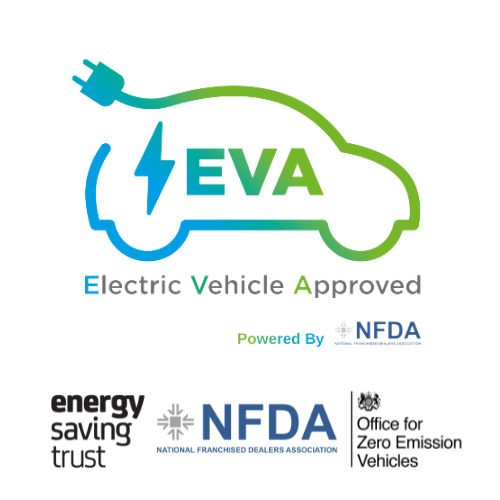ELECTRIC VEHICLE APPROVED ACCREDITATION
Ashford Orbital are awarded the EVA accrediation, which gives you peace of mind that you are dealing with an expert in the electric vehicle sector.


What is the EVA Accreditation?
The Electric Vehicle Approved (EVA) scheme has been developed by the National Franchised Dealers Association (NFDA) to recognise retailers’ excellence in the electric vehicle sector. EVA is endorsed by the Government’s Office for Zero Emission Vehicles (OZEV) and Energy Saving Trust.
To gain the accreditation, our staff have undertaken intensive training. Areas where our staff have demonstrated their knowledge include: charging an EV, different driving modes and their impacts, electric driving range and fuel consumption for plug-in hybrid electric vehicles (PHEV), guidance on servicing and maintenance of an EV etc.
The difference between hybrid, plug-in hybrid and electric cars
HYBRID
In simple terms, a hybrid vehicle (also known as a self-charging hybrid) boasts a small battery and an electric motor to boost efficiency. It requires a petrol or diesel engine as its primary means of propulsion, but a few miles or so of pure electric range should be achievable in the city.
PLUG-IN HYBRID
A plug-in hybrid goes a step further. It retains a petrol or diesel engine, but a larger battery delivers up to 50 miles of electric range, depending on the model. The battery can be recharged using a home charge point or by taking advantage of the expanding public charging network. You could see plug-in hybrids as a stepping stone towards fully electric vehicles because you’re able to do some driving on electric power, but you still have the safety net of an internal combustion engine to back you up.
ELECTRIC
Finally, an electric car (also known as a battery electric vehicle (BEV) or electric vehicle (EV) relies entirely on a battery pack as its means of propulsion. It must be plugged in when the battery is low on charge. Remember this rule: in a hybrid you cannot plug in, in a plug-in hybrid you should plug in, and in an electric car, you must plug in.